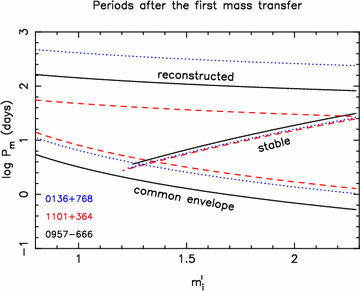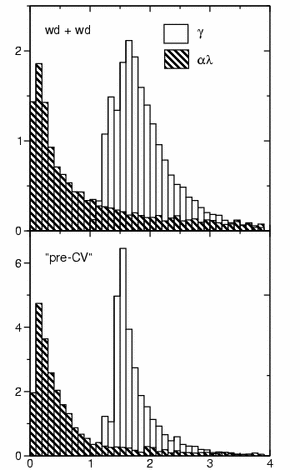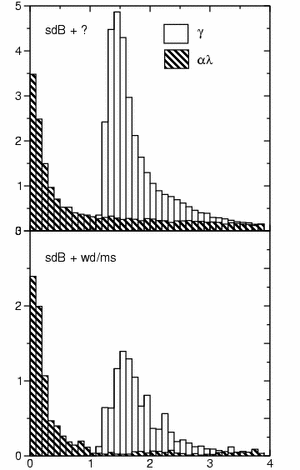Double white dwarfs
Common-envelope
evolution
AM CVn stars
Ultra-compact X-ray
binaries
Black hole binaries
SN Ia progenitors
Surveys
Gravitational waves
LISA wiki (verification
binaries)
Publications
Preprints
My thesis
Common-envelope evolution
The existence of short period binaries with a stellar remnant (white dwarf, neutron star or black hole) shows that the separation in these binaries must have been reduced dramatically, as the remnant is formed from a star that has gone through a red giant phase in which it had a size of hundreds of solar radii. In the 1970s, it was proposed for several types of binaries, that these went through a phase where the companion of the giant spiraled into its envelope, causing the envelope to be lost and the orbit of now the core of the giant and the companion to shrink dramatically.
In such a picture the frictional processes in the envelope causes the spiral-in, and the liberated orbital energy might be used to unbind the envelope of the giant, expelling it into interstellar space. For three double white dwarfs we reconstructed their evolution and concluded that the first phase of mass transfer must have been a common-envelope phase, but without strong shrinkage of the orbit. In this paper we suggested an alternative formalism to calculate the outcome of the common-envelope phase, based on angular momentum balance, rather than energy balance. We proposed that this formalism should be used in cases where the angular momentum of the orbit is much larger than that of the giant envelope.

Reconstruction of the first phase of mass transfer leading to the formation of three observed double white dwarfs (see Nelemans et al. 2000)
Reconstructing all white dwarf binaries
Later we did a more detailed reconstruction, now for all observed binaries with at least one white dwarf (or sub-dwarf B; sdB) star. In the paper we found that the formalism we proposed in 2000 (depending on the angular momentum balance) can explain all observed binaries. The formalism has one free, parameter, gamma. Reconstructing all possible formation paths for the observed binaries, we found all possible values of gamma. We also reconstructed the binaries, using the standard common-envelope formalism, parameterized by the common envelope efficiency, alpha * lambda. The histograms of all possible values of gamma and alpha * lambda are shown in the figure. See the paper for more details.

Reconstructed values of gamma and alpha * lambda, for all observed white dwarf and sdB binaries (see Nelemans & Tout, 2004)
